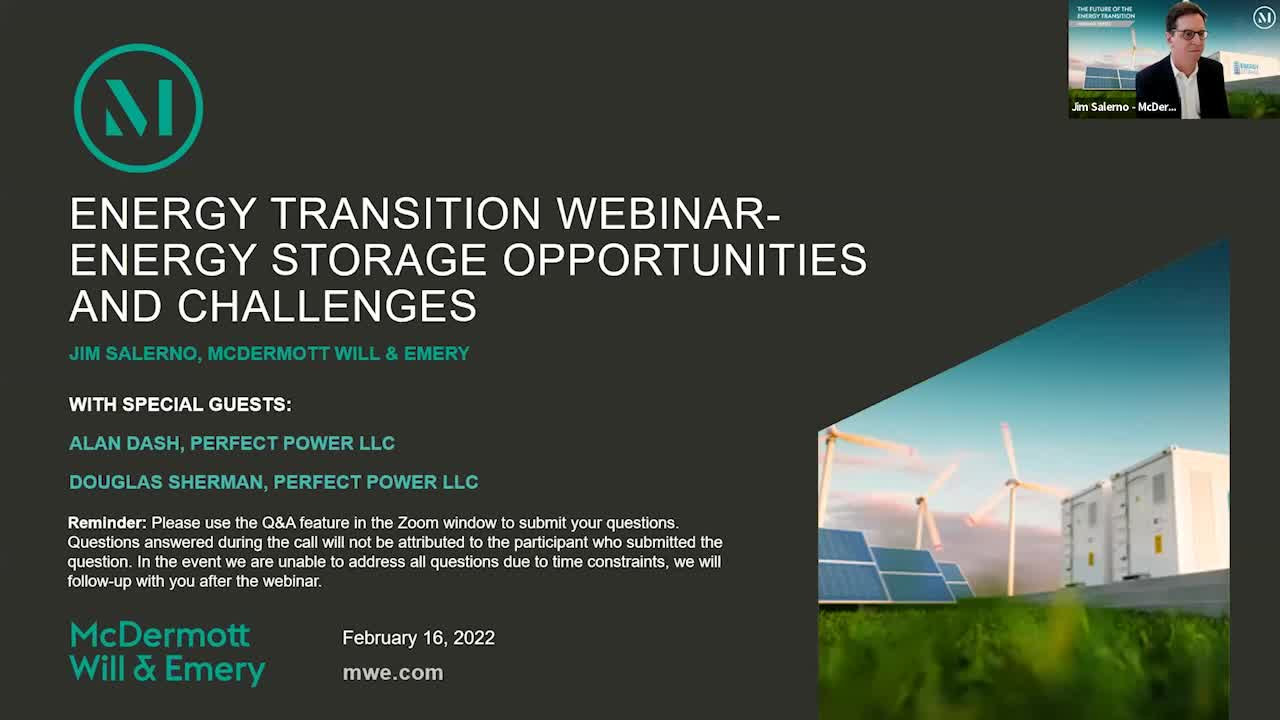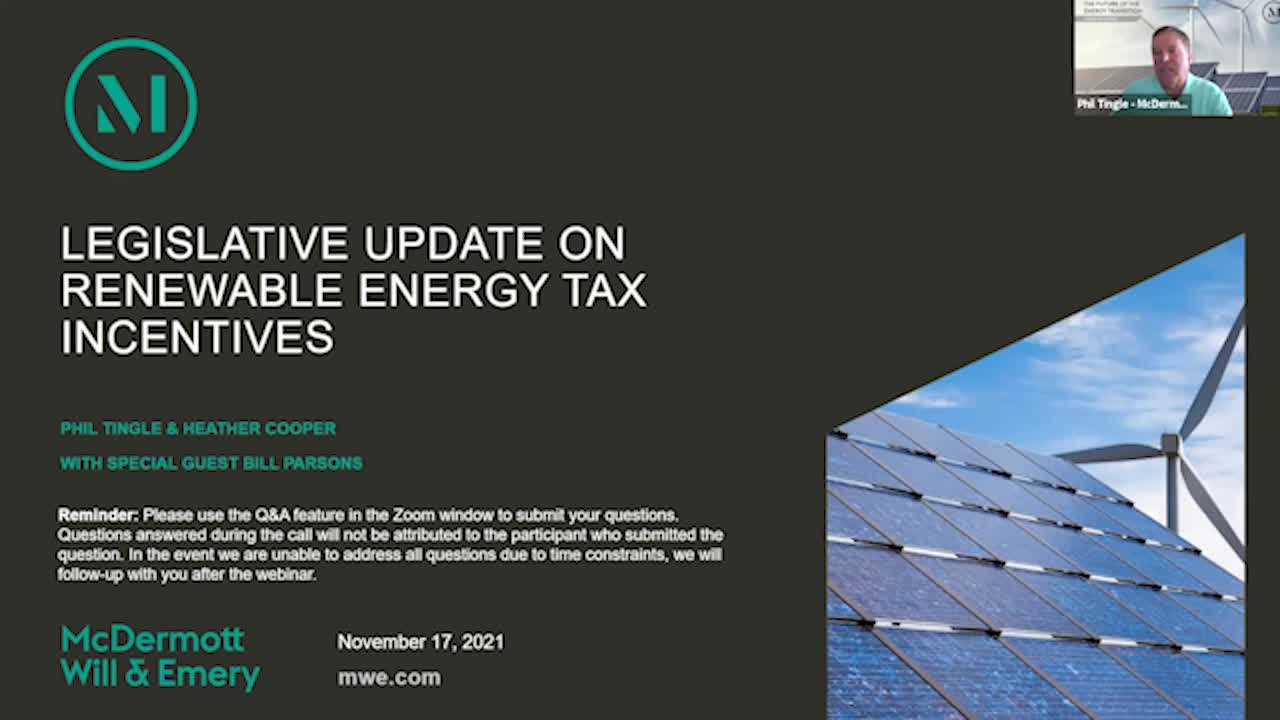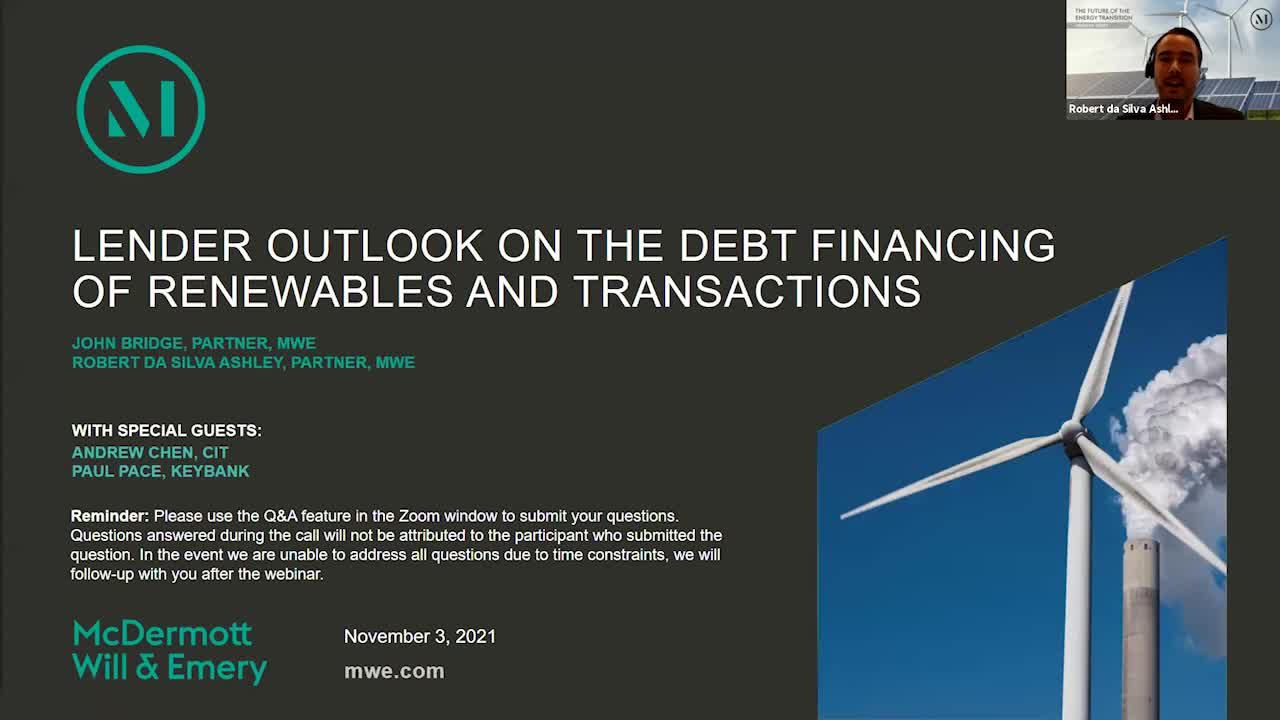What are the opportunities and challenges facing those in the energy storage sector? During the latest webinar in our Energy Transition series, Partner Jim Salerno hosted Perfect Power’s CEO and President Alan Dash and Chief Commercial Officer Douglas Sherman for a 30-minute discussion where they opined on the importance of battery storage and the differences between regulated and unregulated markets within the energy storage industry.

Below are the key takeaways from this discussion:
1. Utility-scale battery storage is necessary for transitioning the grid from fossil fuels to renewables. The surge of renewables across grids has resulted in unpredictability, volatility and intermittency in the energy market, creating a need for a new form of peaking. Batteries are becoming the ideal peaking units as their fast ramping capabilities allow them to adapt to shortfalls in the grid and create stability.
2. Battery storage, unlike renewables, provides capacity as well as ancillary services. This concept is known as “value stacking.” In addition to storage capabilities, ancillary services allow batteries to manage volatility and uncertainty in the grid by providing tools that keep the system in balance and establish the ability to arbitrage the Real Time Market while creating predictability in the Day-Ahead Market.
3. The current regulatory and merchant markets are evolving to facilitate renewables and storage project development. In unregulated markets, such as Texas, the integration of renewables into the grid has grown organically because of the efficiency, speed and economic benefits that are derived from renewables and battery storage. Meanwhile, highly regulated markets, such as California, are focusing on resource adequacy, market certainty and incentives to promote capital investment in the clean energy space—including battery storage.
To access past webinars in this series and to begin receiving Energy updates, including invitations to the webinar series, please click here.
read more

 Subscribe
Subscribe


